Volcanic ejecta
Type of resources
Topics
Keywords
Contact for the resource
Provided by
Years
Formats
Representation types
Update frequencies
-

Electron microprobe glass chemistry data from explosive eruption deposits from Popocatépetl, Iztaccíhuatl and Tláloc-Telapón volcanoes in Central México, spanning the last 700 ka. Associated with the following paper: Sunyé-Puchol, I., Hodgetts, A.G.E., Watt, S.F.L., Arce, J.L., Barfod, D.N., Mark, D.F., Sosa-Ceballos, G., Siebe, C., Dymock, R.C., Blaauw, M., Smith, V.C., 2021. Reconstructing the middle to late Pleistocene explosive eruption histories of Popocatépetl, Iztaccíhuatl and Tláloc-Telapón volcanoes in Central México. J Volcanol Geoth Res 421, 107413. https://doi.org/10.1016/j.jvolgeores.2021.107413
-
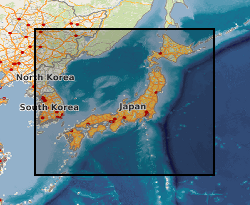
This MS Excel dataset contains tephra depth and age data from ocean drilling expeditions around Japan. IODP, ODP and DSDP shipboard core description records were examined for mentions of volcanic ash, tephra etc., according to criteria described in Mahony et al. 2014. Data are from shipboard visual core descriptions of ocean drilling expeditions located within a few hundred km of Japan. Cores without published age-depth data are not included in this dataset. The expeditions occurred between 1973 (DSDP 31) to 2013 (IODP 346). Tephra layers are dated as being deposited between 0.003-18.5 Ma. This data will be of interest to volcanologists or anyone interested in the location of volcanic ash layers within IODP cores.
-

Many tephra layers were identified in sediment cores drilled during IODP Expedition 350. Here, 1092 glass shards from 76 tephra occurrences (layer or patch) were analysed using electron probe microanalyses (EPMA). Data are not averaged, nor normalised. Geochemistry data were collected for: SiO2, TiO2, Al2O3, Cr2O3, FeO, MnO, MgO, CaO, Na2O, K2O, P2O5, SO3, Cl and O. Secondary standard data are given, as well as beam setup conditions. The data were obtained using the instruments at the University of Bristol, over two sessions during October and November 2014.
-

The data provides a summary of volcanic ash samples collected from around Anak Krakatau, Indonesia, in August 2019, originating from the December 2018 eruption. The ash was generated in eruptions immediately following the sector collapse of Anak Krakatau. The data provides a summary of sample locations, brief information on the sample context (original notebook entries for the field sites, alongside summary stratigraphic descriptions), componentry information for selected ash samples, laser-diffraction grain-size information for the ash samples, whole rock XRF compositional analysis of selected samples, and EPMA mineral analyses from selected samples.
-

The dataset worksheet contains a list of core samples taken during IODP Exp 350 and foraminifera-based data for selected samples. The work was started with the aim of reconstructing palaeoproductivity changes (namely surface-to-deep carbon isotope gradients and U/Ca measurements) over tephra layers in order to test the ‘ash fertilisation hypothesis’. However, the work has been temporarily halted given the on-board volcanologists ongoing concerns that the ash layers in the selected cores have been reworked and therefore are not primary. Because of the induration and silicification of the core samples at quite shallow depths in the core, the other aim of the project (to reconstruct palaeoceanographic changes from 16-0 Ma) was not possible. The spreadsheet contains a full list of samples and a list of samples that have been examined and analysed. The data worksheet contains the no. of Globigerinoides ruber (with weight), Oridorsalis umbonatus, Uvigerina spp. and Cibicidoides spp. specimens for specific samples. For selected samples, stable oxygen and carbon isotopes are given and a graph of the carbon isotopes vs depth in core is presented.
-
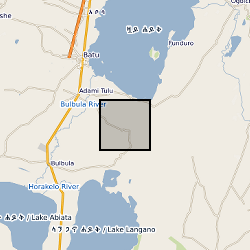
Tephra layer summary for Lake Abijata and Lake Langano cores, Ethiopia. Data are referenced in McNamara et al., 2018: Using Lake Sediment Cores to Improve Records of Volcanism at Aluto Volcano in the Main Ethiopian Rift; https://doi.org/10.1029/2018GC007686
-
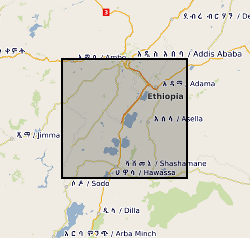
Glass major element geochemical data on Late Quaternary tephra deposits from the Main Ethiopian Rift volcanoes. These data were acquired using Electron Microprobe Analysis, and secondary standard data (MPI-DING glasses) are also included. All samples were given a unique name related to the outcrop from which they were obtained. Outcrops are named "MER" followed by a 3-digit number (e.g. MER153). Samples from a given outcrops are given the same name, followed by a letter (e.g. MER153A). Outcrop localities, with GPS coordinates (Lat Long WGS84) and brief description of the geology are also included. These data are published as Supplementary Files to a paper published in Journal of Volcanology and Geothermal Research: Fontijn et al (2018), https://doi.org/10.1016/j.jvolgeores.2018.02.001.
-
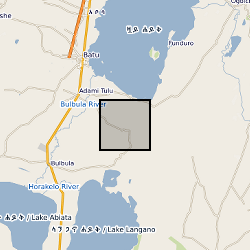
Petrological and geochemical analysis of tephra samples from Aluto volcano, Ethiopia. Data are referenced in McNamara et al., 2018: Using Lake Sediment Cores to Improve Records of Volcanism at Aluto Volcano in the Main Ethiopian Rift; https://doi.org/10.1029/2018GC007686.
-
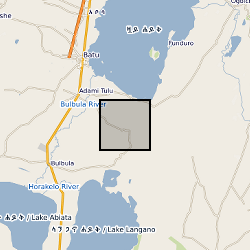
Scanning electron microscopy (SEM) and X-ray microtomography of fluidal pyroclasts (X-ray microtomography). Data are referenced in Clarke et al., 2019: Fluidal pyroclasts reveal the intensity of peralkaline rhyolite pumice cone eruptions; https://doi.org/10.1038/s41467-019-09947-8.
-

This dataset is the output of a NERC fellowship aimed to understand the long-term dynamics of tropical vegetation through palaeoecological analysis. For doing this, two sedimentary archives (Laguna Pindo and Laguna Baños) from Ecuador were radiocarbon dated and analysed for pollen, non-pollen palynomorphs, charcoal, chironomids, stable isotopes and XRF of tephra deposits. Each proxy was analysed at different resolution. Laguna Pindo is a mid-elevation lake (1250 m asl) that spans the last 50,000 years. Laguna Baños is an Andean lake located at 3800 m asl and contains sediments representative of the last 6500 years. Both water bodies are very shallow. The data is presented mainly in excel spreadsheets as raw data (except for radiocarbon dating data, which are the PDF files provided by NRCF and are available in the NGDC), without any math treatment or conversion (unless specified). NERC fellowship is NE/J 018562/1.
 NERC Data Catalogue Service
NERC Data Catalogue Service